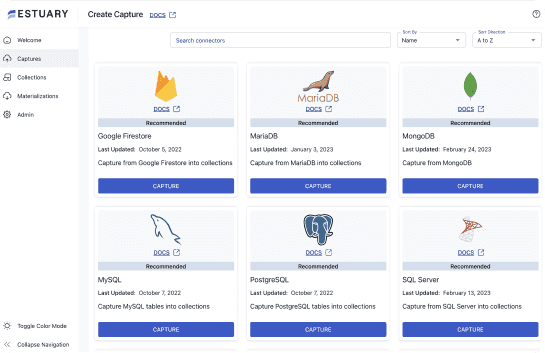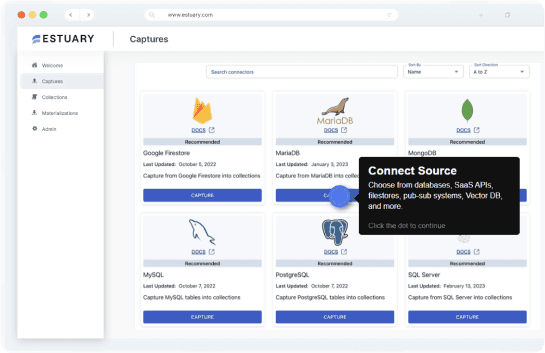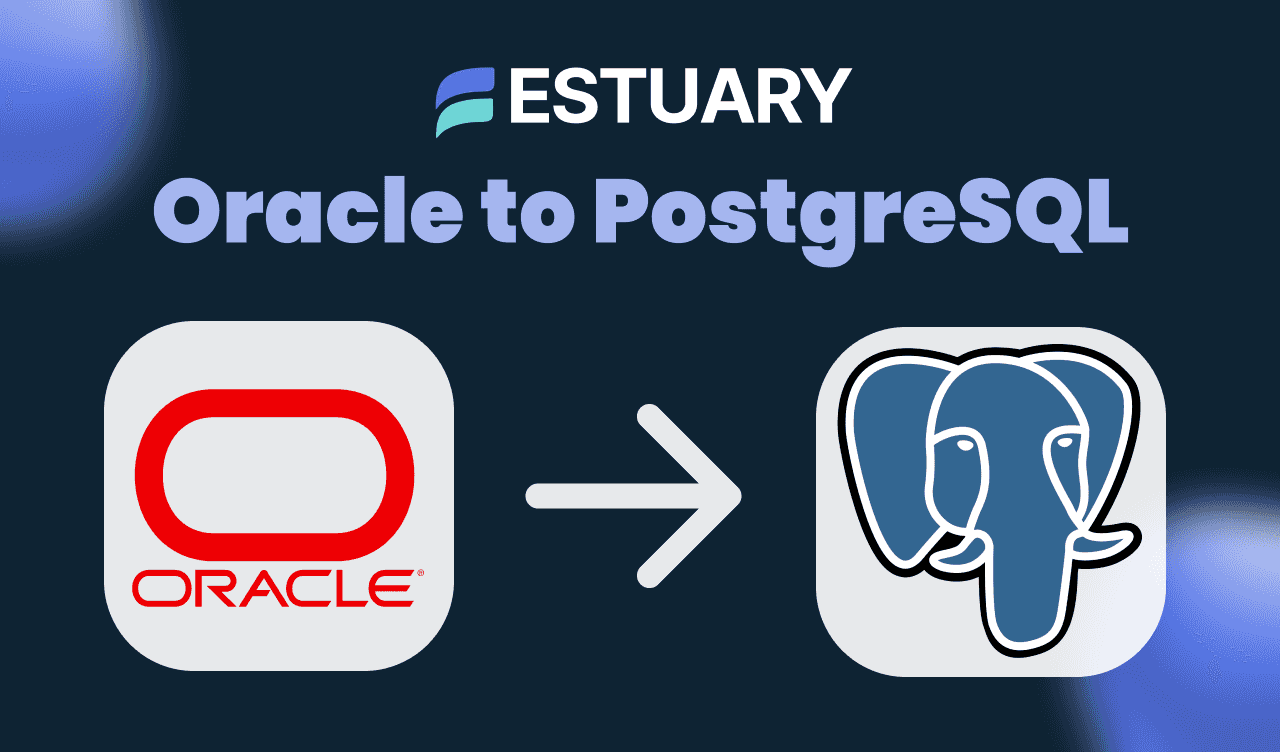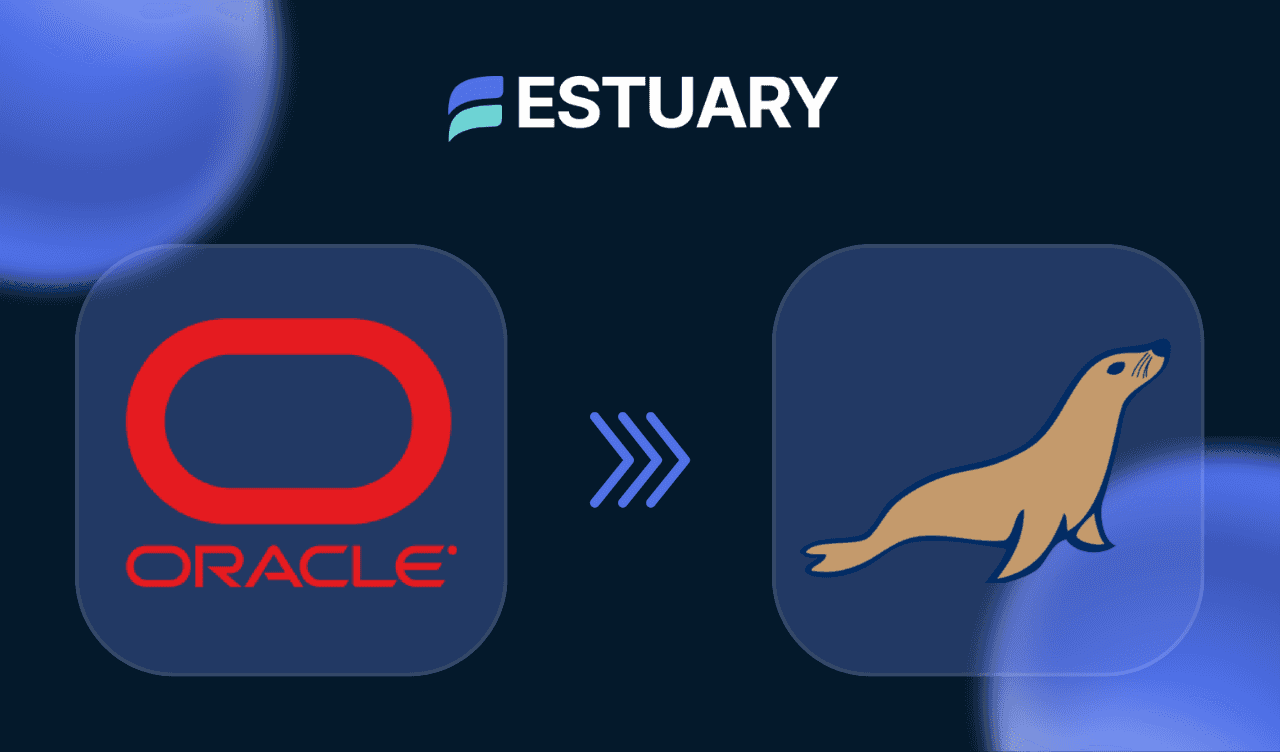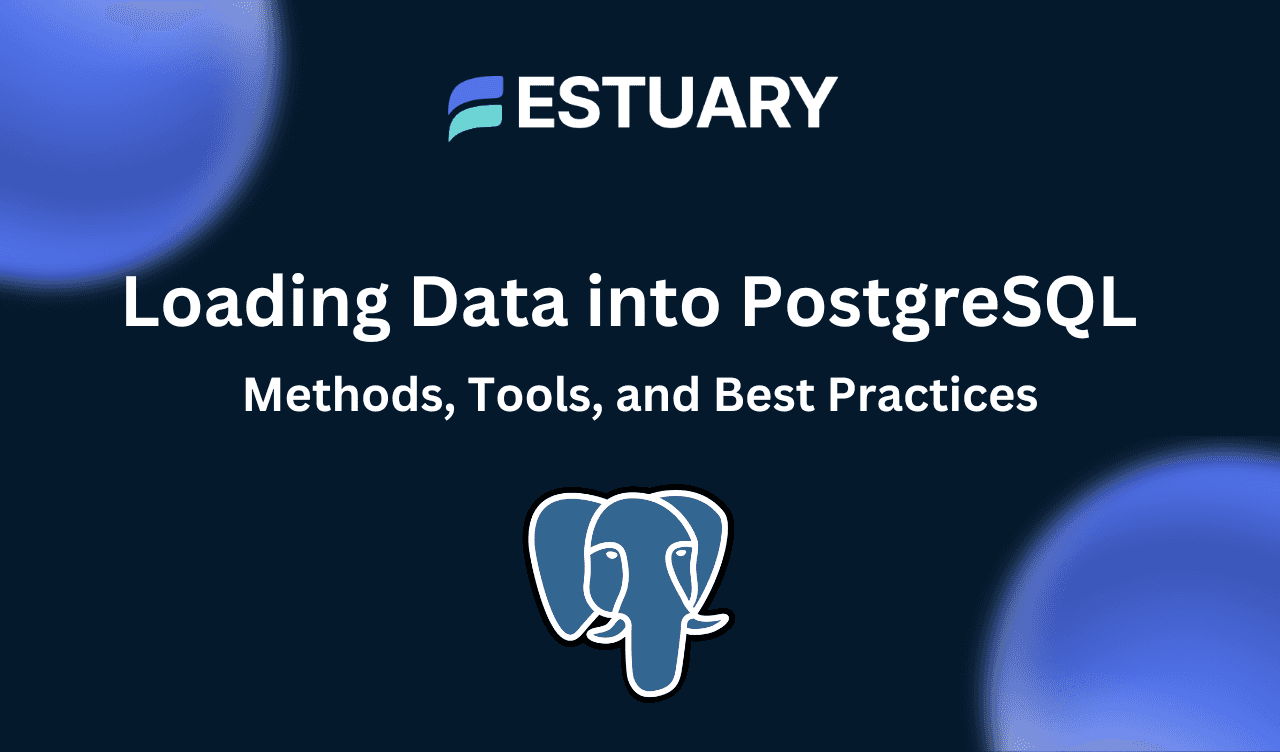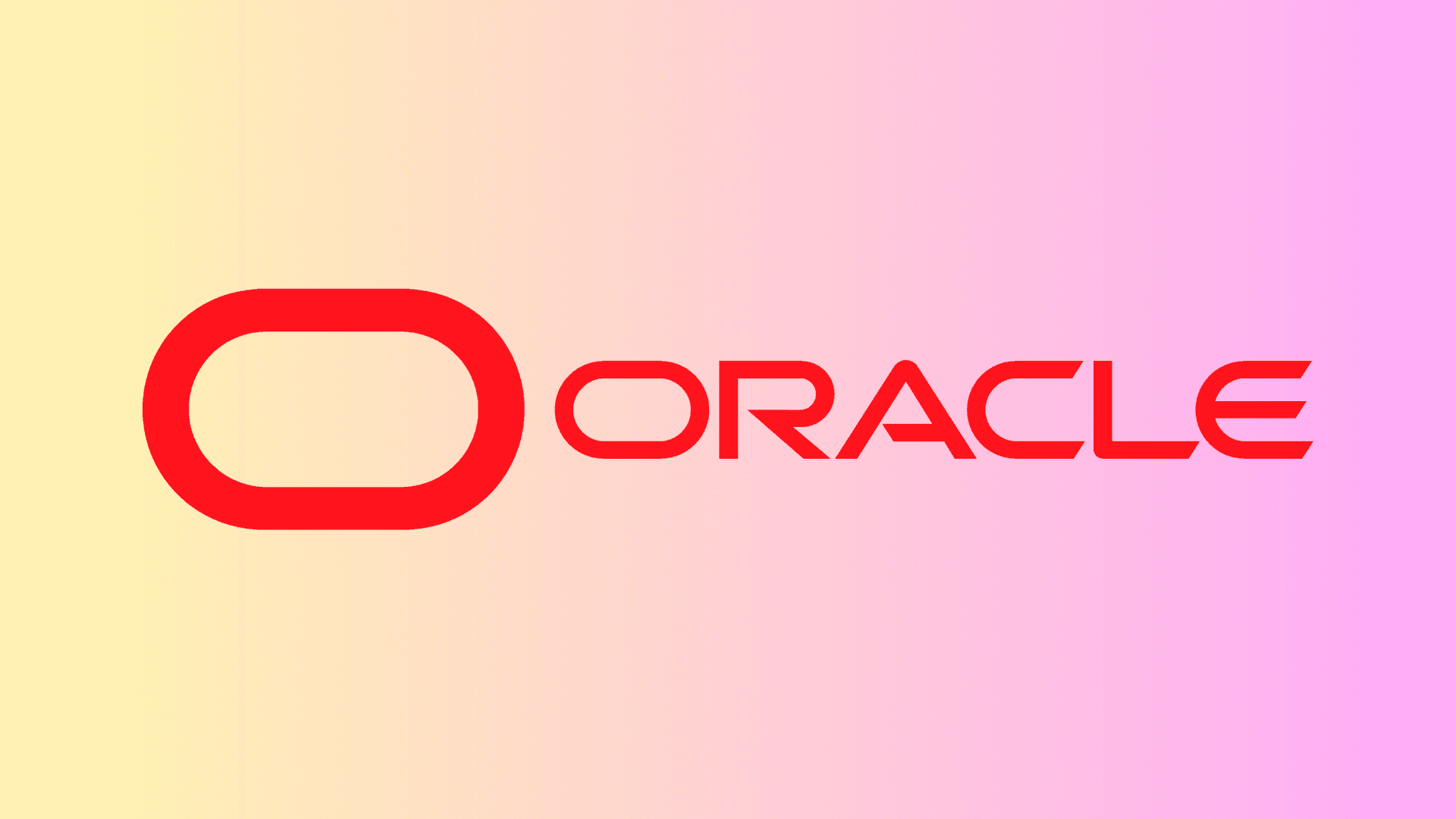
As enterprise organizations generate exponentially growing volumes of transactional data daily, maintaining and scaling on-premise legacy database systems like Oracle has become increasingly challenging. These systems must deliver high availability, handle failures reliably, perform optimally under heavy user loads, and ensure strong data consistency with full ACID compliance. However, Oracle's proprietary ecosystem, limited autoscaling capabilities, and escalating licensing and maintenance costs are increasingly misaligned with the agility and cost-efficiency that modern cloud-native platforms offer. Furthermore, on-premise systems often lack the integration capabilities essential for supporting contemporary data architectures, including real-time analytics, machine learning workflows, and multi-cloud environments.
Organizations are adopting PostgreSQL as a cost-effective, cloud-friendly, and highly scalable alternative to legacy systems like Oracle. Open-source by design, PostgreSQL offers vendor flexibility, strong community support, and enterprise-grade performance for both transactional and analytical workloads. Its resurgence is fueled by its compatibility with modern AI and machine learning applications, support for complex queries, and seamless integration with major cloud platforms like AWS, Azure, and GCP.
Recent strategic acquisitions—such as Snowflake's acquisition of Crunchy Data and Databricks' acquisition of Neon—underscore the critical importance of owning a robust, cloud-native PostgreSQL stack to retain developer mindshare and build comprehensive end-to-end data ecosystems. These moves reflect the broader industry shift by technology leaders toward platforms that achieve the optimal balance between cost-efficiency, high availability, rapid deployment, and regulatory compliance. PostgreSQL's extensibility, active development roadmap, and ability to support hybrid OLTP/OLAP workloads make it an increasingly attractive choice for modern enterprise infrastructure.
PostgreSQL offers a scalable, cost-effective, and future-proof alternative—particularly when combined with specialized tools such as Ora2Pg for schema translation; Debezium, Google Cloud DMS, or Estuary for change data capture (CDC); and managed cloud offerings (including Amazon Aurora PostgreSQL or Cloud SQL for PostgreSQL) to simplify operations and transformations.
However, syncing Oracle with a relational system like PostgreSQL is not as straightforward as it may seem. In this guide, you’ll go through the strategies for Oracle to PostgreSQL migrations, the technical challenges that arise during migration—from converting Oracle-specific PL/SQL logic and handling massive data volumes to implementing reliable change data capture and minimizing application downtime. The guide also examines three core migration strategies (snapshot, piecewise snapshot, and CDC-based approaches) and evaluates popular migration tools and methods, including Oracle native tools, cloud-based Database Migration Services, and how Estuary can streamline the entire migration process.
Why Migrate from Oracle to PostgreSQL?
Migrating from Oracle to PostgreSQL isn’t just about cost savings—it’s about unlocking agility, scalability, and future-readiness. As enterprises seek to modernize their infrastructure, PostgreSQL stands out as a powerful, open-source alternative that supports cloud-native deployments and developer-friendly tooling.
- Cost Efficiency
Oracle’s licensing and support costs are notoriously high, especially at scale. PostgreSQL, by contrast, is fully open-source and free to use. When paired with managed services like AWS Aurora, Google Cloud SQL, or Azure Database for PostgreSQL, it becomes a pay-as-you-go solution with no vendor lock-in and dramatically lower total cost of ownership (TCO).
- Scalability
Both databases scale—but PostgreSQL does it without licensing constraints. PostgreSQL is built to handle large data volumes and horizontal scaling using clustering and sharding. Its Write-Ahead Logging (WAL) ensures data integrity, even under heavy load. Oracle’s Standard Edition limits you to four sockets, and scaling often requires upgrading to the more expensive Enterprise Edition.
- Change Data Capture (CDC) and Real-Time Replication
Setting up real-time data replication from Oracle can be challenging and costly (e.g., GoldenGate). PostgreSQL supports streaming replication, logical replication, and read replicas with robust performance in high-availability setups. It supports the Primary-Replica model natively and integrates easily with modern containerized and distributed architectures. While Oracle provides similar features via DataGuard and supports both Primary-Replica and Primary-Primary, its setup is more complex and costly. PostgreSQL also supports a broader ecosystem of APIs, extensions, and third-party tools—making it more compatible with today's modular tech stacks.
- Cloud Migration Readiness
Oracle databases, particularly those deeply tied to proprietary features (e.g., PL/SQL, RAC, Data Guard), require careful planning for migration. Oracle, while available in the cloud, often comes with complex licensing terms and limited support outside its own ecosystem, the need for specific configurations, and higher operational management overhead.
PostgreSQL runs natively on all major cloud platforms, such as AWS, Azure and GCP and integrates seamlessly with CI/CD pipelines, and serverless tools. Tools like Ora2Pg, AWS DMS, or Google Cloud DMS can assist in schema conversion and data movement.
Key Challenges with Oracle to PostgreSQL Migration
Oracle databases are powerful, feature-rich systems—but that richness introduces significant complexity when migrating to PostgreSQL, especially in a cloud environment. These challenges span technical, architectural, and operational layers.
The primary challenges in Oracle to PostgreSQL migrations include:
- Converting Oracle-Specific Features and PL/SQL Logic
One of the most difficult aspects of migrating from Oracle is translating its proprietary PL/SQL codebase—including procedures, triggers, packages, cursors, and exception handling—into PostgreSQL. Features like autonomous transactions, custom object types, and packages often have no direct equivalents in PostgreSQL. This requires rewriting logic in PL/pgSQL or offloading it to the application layer.
Oracle’s built-in tools, such as SQL Developer Migration Assistant, are rigid and demand deep Oracle expertise. In contrast, open-source tools like Ora2Pg, AWS Schema Conversion Tool (SCT), and pgloader provide more automation, transparency, and community support for translating schemas and code.
- Handling Large Data Volumes at Scale
Enterprise Oracle databases often store terabytes of historical transactional data. Migrating this data efficiently is a major challenge, especially when exporting using tools like Oracle Data Pump, which can stress I/O and network bandwidth, particularly in cloud migrations.
PostgreSQL supports high-speed ingestion through parallel loading tools like COPY, pg_bulkload, and data pipeline platforms such as Estuary. To avoid performance bottlenecks, teams must carefully tune memory, disk IOPS, and replication settings. Cloud-native PostgreSQL services (e.g., Amazon RDS, Azure PostgreSQL, Google Cloud SQL) are well-equipped to handle this scale with elastic infrastructure.
- Ensuring Transactional Consistency
Maintaining transactional consistency during migration is essential—especially when transferring large datasets. Oracle’s native export methods don’t always guarantee consistency across interdependent tables without complex staging, especially in hybrid cloud scenarios.
PostgreSQL, particularly in cloud environments, supports parallel and consistent loading methods. A common strategy combines a full initial load with real-time Change Data Capture (CDC) to keep source and target in sync until the final cutover, ensuring zero data loss.
- Managing Change Data Capture (CDC)
Oracle’s CDC options—such as GoldenGate, XStreams, and ODI—are proprietary, expensive, and complex to integrate into modern data stacks. Even OCI’s managed CDC services retain these limitations.
PostgreSQL, on the other hand, supports native logical replication, and integrates seamlessly with open-source and cloud-managed CDC tools like Debezium, AWS DMS, and Google Datastream.
- Minimizing Application Downtime
Mission-critical enterprise applications (e.g., billing, inventory, or order systems) cannot afford extended downtime. To enable near-zero downtime, organizations typically combine a full historical load with ongoing CDC replication, allowing a controlled and timely switchover.
This hybrid approach ensures high availability, minimal disruption, and data consistency during the migration window.
- Data Validation and Observability
Post-migration validation is essential to ensure that data was transferred accurately and remains trustworthy. Oracle lacks built-in tools for deep validation, often requiring manual scripts to compare row counts or foreign keys.
PostgreSQL, by contrast, integrates well with modern data quality frameworks like dbt tests and Great Expectations, and supports cloud-native observability using tools such as AWS CloudWatch. These integrations enable real-time alerting, metric tracking, and proactive issue resolution.
- Skill Set and Organizational Transition
Teams accustomed to Oracle’s tooling (e.g., PL/SQL, OEM) may face a steep learning curve when transitioning to PostgreSQL and associated cloud-native technologies like Kubernetes, containerization, and IaC (Infrastructure as Code) tools.
Successful modernization requires upfront investment in training, change management, and possibly hiring engineers with PostgreSQL and DevOps experience to bridge the skills gap.
Oracle to PostgreSQL Migration Strategies
Choosing the right migration strategy is as important as selecting the right tools. Strategy dictates downtime tolerance, data consistency, and operational complexity. Below are the three most common approaches used in Oracle to PostgreSQL migrations, along with technical considerations for each.
There are three commonly used migration strategies: snapshot, piecewise snapshot, and change data capture (CDC).
- Snapshot Migration
The snapshot migration approach involves a full export of Oracle data, followed by a one-time import into PostgreSQL—typically into a cloud service like GCP.
This method is best suited for smaller databases or non-critical systems, as it requires system downtime during the migration window. Tools like pgloader, ora2pg, and cloud-native pipelines are often used for such scenarios. One limitation for this approach is that it requires extended downtime, especially for large databases, and is not ideal for high availability or business critical applications.
- Piecewise Snapshot
A more scalable method is the piecewise snapshot, where large Oracle datasets are split into manageable chunks (often by primary keys or partitions) and migrated in parallel threads or processes. This approach significantly speeds up the migration and reduces the impact on production systems. Cloud orchestration tools like Google Dataflow, Data Migration Service (DMS), or Estuary can be leveraged to coordinate chunked data transfers. However, this method demands careful planning to prevent data overlaps or inconsistencies.
- Change Data Capture (CDC)
For organizations needing near-zero downtime, change data capture (CDC) is the most robust strategy. CDC tools continuously replicate changes from Oracle (inserts, updates, deletes) to PostgreSQL in real-time, either after or alongside an initial snapshot. This enables a seamless cutover with minimal impact on production systems. CDC can be implemented using trigger-based methods—where the database triggers log changes to “history” tables—or by parsing Oracle’s Redo Logs via tools like Oracle GoldenGate, Debezium, or Estuary.
Variants of CDC:
- Trigger-Based CDC: Custom triggers on Oracle tables write changes into a separate "history" or staging table. These changes are then streamed to PostgreSQL. This doesn’t require access to Oracle’s internals or redo logs. It has performance overhead on source DB due to extra writes and can complicate schema management and introduce latency.
- Transaction Log-Based CDC: Reads Oracle redo/archived logs directly using tools like Oracle GoldenGate, or Debezium which has some setup challenges. It offers lower overhead and no schema changes to source DB. Failure handling (e.g., target outages) must be designed carefully to avoid replication inconsistencies. Compared to complex and expensive solutions like Oracle GoldenGate, Estuary is a cost-effective, cloud-native alternative that reduces operational overhead while ensuring data integrity and minimal downtime.
Popular Methods to Connect Oracle to Postgres
Once a migration strategy is chosen—snapshot, piecewise snapshot, or CDC—the next step is selecting the right tools. Here are three common options for Oracle to PostgreSQL migrations in the cloud:
Option #1: Oracle Native / Hybrid Tools
Oracle provides a range of native tools to support database migrations, especially for enterprises looking to move off Oracle systems. These tools are often tightly integrated with Oracle's ecosystem and offer powerful capabilities, but they typically require specialized expertise and can introduce additional licensing considerations depending on the feature set used.
- Ora2Pg is a widely used open-source tool designed to migrate Oracle databases to PostgreSQL. It connects to the Oracle database, extracts schema definitions, data, indexes, stored procedures, and more, and generates equivalent SQL scripts compatible with PostgreSQL. It is highly configurable and supports a range of migration scenarios, making it a popular choice for schema and data transformation.
- SQL Developer Migration Workbench assists users in migrating from Oracle to other databases. It provides schema conversion capabilities, basic data type mapping, and export/import functionality. This tool is suitable for performing compatibility checks and getting a quick start on schema conversion, although it may fall short when dealing with complex Oracle-specific objects or large-scale automation.
- pgloader specializes in high-performance data type mapping and data loading from Oracle to Postgres. It performs fast, parallelized data loads, but lacks robust fault-tolerance and does not support resumability, which may be a concern during long-running operations.
- ora_migrator and orafce extend PostgreSQL’s compatibility with Oracle by supporting foreign data wrappers and Oracle-style functions, helping bridge SQL dialect and data type gaps.
- Debezium is a popular open-source CDC engine that can stream data changes from Oracle using Oracle LogMiner. However, it requires a full Kafka-based ecosystem (Kafka, Zookeeper, Connectors) to operate, which adds operational complexity. While Debezium enables real-time CDC and works well for stream-based architectures, its setup and maintenance may be too heavy for teams without distributed systems expertise.
Option #2: Database Migration Service (DMS)
Cloud providers offer Database Migration Services that support both homogeneous and heterogeneous migrations from Oracle to PostgreSQL-compatible targets:
- Google Cloud DMS
Supports migrations to Cloud SQL or AlloyDB for PostgreSQL. Change Data Capture (CDC) is enabled via Oracle GoldenGate integration or native log mining.
- AWS DMS
Enables full load and CDC replication from Oracle to Amazon RDS/Aurora PostgreSQL or self-managed PostgreSQL. It uses Oracle redo logs and supplemental logging for CDC, with schema conversion handled by the AWS Schema Conversion Tool (SCT).
- Azure DMS
Supports migrations to Azure Database for PostgreSQL (Flexible or Single Server). Offers both offline and CDC-based minimal downtime migrations, integrating with Azure Data Factory for complex ETL or transformations.
DMS is ideal for cloud migrations requiring near-zero downtime for enterprises wanting a managed service within the cloud ecosystem with minimal infrastructure management.
Option #3: Oracle to PostgreSQL Integration Using Estuary Flow
Estuary offers a unified, streaming-native solution that simplifies Oracle to PostgreSQL migrations by combining both initial load and change data capture (CDC) into a single managed pipeline. During the initial snapshot phase, Estuary parallelizes the ingestion of high-volume Oracle data, eliminating the need for manual chunking or custom orchestration. For CDC, Estuary reads directly from Oracle Redo Logs and continuously streams changes to PostgreSQL with minimal lag. This hybrid approach ensures fast data onboarding and real-time synchronization without disrupting source systems.
Under the hood, Estuary’s Oracle connector leverages Oracle LogMiner to perform granular CDC, supporting Oracle 11g and above. This enables full insert, update, and delete tracking while offering custom backfill options and schema-aware capture, ensuring both performance and consistency. Estuary also supports schema evolution and real-time observability, making it easier to track replication status, detect drift, and minimize migration risk. Compared to proprietary solutions like Oracle GoldenGate, Estuary is a cost-effective, fully managed alternative that accelerates cloud migration without compromising on data fidelity or system availability.
To better understand how Estuary supports and enhances the migration experience, here’s a breakdown of its key features:
Feature | Description | Benefit for Migration |
| Unified Initial Load + CDC | Combines full historical sync and Change Data Capture (CDC) into a single managed pipeline. | Ensures real-time replication with minimal downtime and simplified setup. |
| Direct Redo Log Access | Reads from Oracle’s Redo Logs natively without needing separate CDC tools like GoldenGate. | Lower infrastructure cost, faster replication with less complexity. |
| Low-Code Setup | Offers a low-code interface and declarative APIs for pipeline deployment. | Reduces setup time and lowers dependency on deeply specialized teams. |
| Kafka-Compatible (Dekaf Layer) | Integrates with Kafka-based ecosystems using a Kafka-compatible API layer (Dekaf). | Seamlessly connects with existing streaming architectures with no need to modify downstream systems. |
| Automated Schema Inference | Continuously infers schema from source data and updates dynamically as new data arrives. | Reduces manual schema mapping work, especially useful when source schemas evolve or are poorly documented. |
| Schema-Validated Collections | Converts source data into structured, validated formats stored in real-time collections. | Acts as a real-time data lake, simplifying downstream consumption and analytics. |
| Granular Schema Change Control | Supports onIncompatibleSchemaChange to define how the system reacts to incompatible schema changes. | Gives data engineers full control over pipeline stability during schema evolution. |
| Real-Time Monitoring & Observability | Provides visibility into every stage of data movement, with lineage, health metrics, and retry logic. | Helps in debugging, auditing, and ensuring compliance. |
Conclusion
Migrating from Oracle to PostgreSQL represents a strategic transformation for enterprises seeking to embrace cloud-native architectures, significantly reduce operational costs, and achieve greater technological flexibility. While Oracle's native migration tools—including Ora2Pg and SQL Developer Migration Workbench—provide comprehensive migration capabilities within their established ecosystem, they typically demand extensive Oracle expertise and involve considerable operational complexity. Even sophisticated approaches such as snapshot-based replication and Change Data Capture (CDC) using Oracle GoldenGate present substantial financial investments and technical challenges, particularly when addressing intricate schema conversions and data type incompatibilities that require careful translation between disparate systems.
In contrast, Estuary delivers a modern, cloud-native solution that fundamentally simplifies the migration journey while maintaining enterprise-grade reliability and performance. Its unified streaming platform seamlessly supports both high-volume historical data transfers and real-time CDC operations by reading directly from Oracle Redo Logs and streaming changes with minimal latency. This integrated approach eliminates the need for separate CDC infrastructure components and dramatically reduces the operational overhead typically associated with large-scale database migrations.
As enterprises continue to modernize their data infrastructure and embrace cloud-first strategies, the combination of PostgreSQL's robust capabilities and Estuary's streamlined migration approach provides a compelling pathway for organizations ready to move beyond the constraints of legacy Oracle environments toward more agile, scalable, and cost-effective database solutions.
You can set up your first data pipeline with Estuary for free. And see how others are implementing their data architecture with the help of Estuary Flow.

About the author
Ruhee has a background in Computer Science and Economics and has worked as a Data Engineer for SaaS providing tech startups, where she has automated ETL processes using cutting-edge technologies and migrated data infrastructures to the cloud with AWS/Azure services. She is currently pursuing a Master’s in Business Analytics with a focus on Operations and AI at Worcester Polytechnic Institute.

